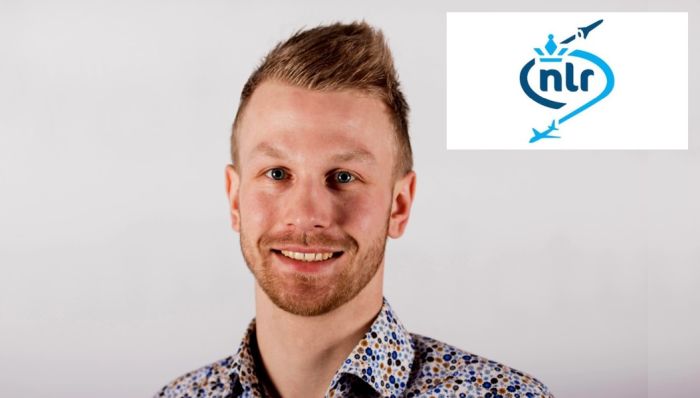Hi, my name is Tim Luten. I am a mechanical engineer with a background in thermodynamics and fluid mechanics.
Currently, I am working as an R&D engineer at the Royal Netherlands Aerospace Centre – NLR within the Energy & Thermal management department.
What was your original motivation to become a researcher?
I always had a fascination with building all kinds of things and wanted to know how they were put together. That is why the broadly oriented study Mechanical Engineering was the perfect match for me. I had the most affinity with the projects about energy, sustainability, thermodynamics, and fluid mechanics in combination with topics about aerospace. After aircraft engineering courses and a thesis about the cooling of the battery pack of a single-person drone, I ended up at NLR for the final phase of the master study. I conducted a study into the design of a cooling system for fuel cell-powered electrical aircraft and did a feasibility study into two-phase cooling for fuel cells. My graduation research was into the origin and characterization of superheated liquid in a two-phase thermal management system. Furthermore, we want to improve the heat transfer during boiling using the solubility of refrigerant fluids. Still too much to investigate, so plenty of reasons to join NLR as an R&D engineer in thermal management.
What is your (main) research area today?
My main tasks at NLR have to do with hydrogen conditioning, liquid hydrogen, fuel cells, and advanced cooling systems such as 2-phase mechanically pumped thermal management systems. Mainly in the simulation and design phases. The projects that I work on are related to making hydrogen-electric flight possible in the near future.
What is the main objective of your team in BRAVA?
Fuel cells generate a large amount of waste heat that has to be removed with a cooling system. Our main objective is to designing, developing, testing and validating a novel thermal management system for fuel cells that uses an evaporating fluid to transport waste heat from the fuel cells to the ram air heat exchangers.
The advantage compared to a conventional liquid (water/glycol) cooling system is that the required mass flow is an order of magnitude smaller, which results in a significant lower mass. Furthermore, freezing of the fluid under low ambient temperatures (-55 °C) is not possible, since the freezing points of fluids used for this novel system are much lower (typically < -70 °C) than the freezing point of water/glycol (approx. -45 °C).
What expertise and facilities does your team have to meet those objectives?
Within our NLR team, we have an excellent experience in simulating, designing, developing and test two-phase cooling systems. Example projects are the Tracker Thermal Control Cooling system for AMS02, a dedicated two-phase cooling system which operates on ISS since May 16 2011. In the TOPMOST project, a lightweight two-phase cooling system for power electronics was designed and tested, including vibration, shock, salt spray, sand, and dust. Furthermore, we have a thermal laboratory with a thermal vacuum facility, different two-phase test facilities, and a hydrogen test facility THETA for testing of aerospace hydrogen fuel cell systems.
Which aspects of your research at BRAVA do you believe are the most innovative and what unique opportunities offer BRAVA to yourself and/or your organisation?
In my opinion, it is very revolutionary to apply two-phase cooling in fuel cells. Currently, multi-kW fuel cell systems are equipped with conventional liquid cooling, which is relatively heavy. It is essential for aviation to have the lightest possible subsystems and two-phase cooling can have a major contribution to this. Thermal management solutions are core enablers for liquid hydrogen fuel cell powertrains for aviation. Building on NLR’s world class heritage in thermal management, we strive towards sustainable aviation!
How do you see the future use of the BRAVA-results and the impact of BRAVA-project in our daily lives?
The results of the BRAVA project will help to bring hydrogen-electric flight closer to commercial application. I think it is unique and special to be able to contribute to this, even if it is only a small part of a whole aircraft. In addition, I think that the general technical development within the BRAVA projects will also be useful for other emerging technologies and applications.

